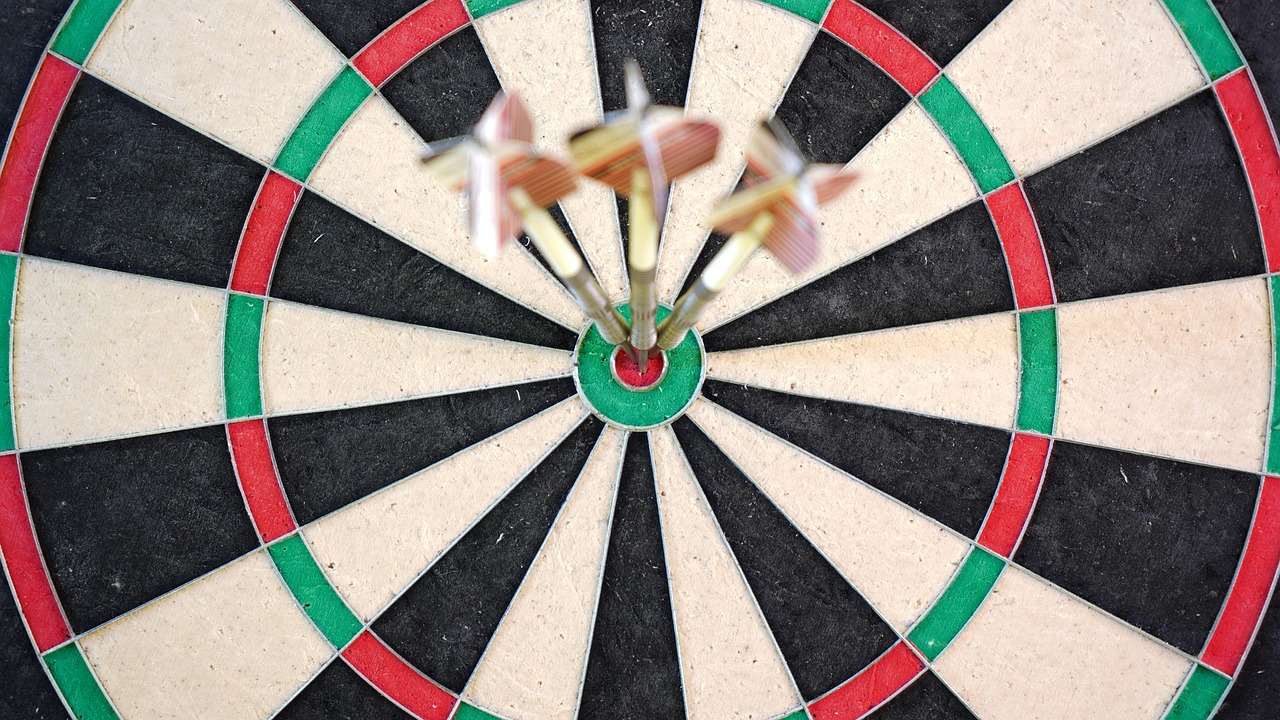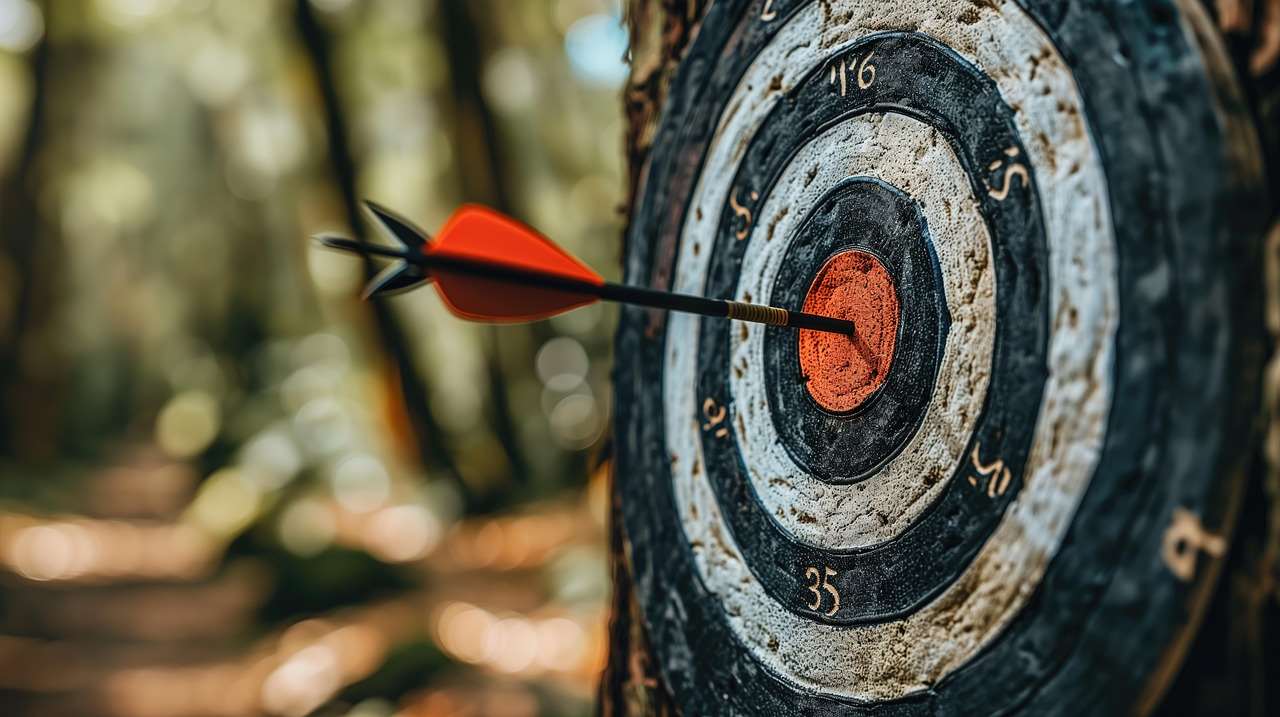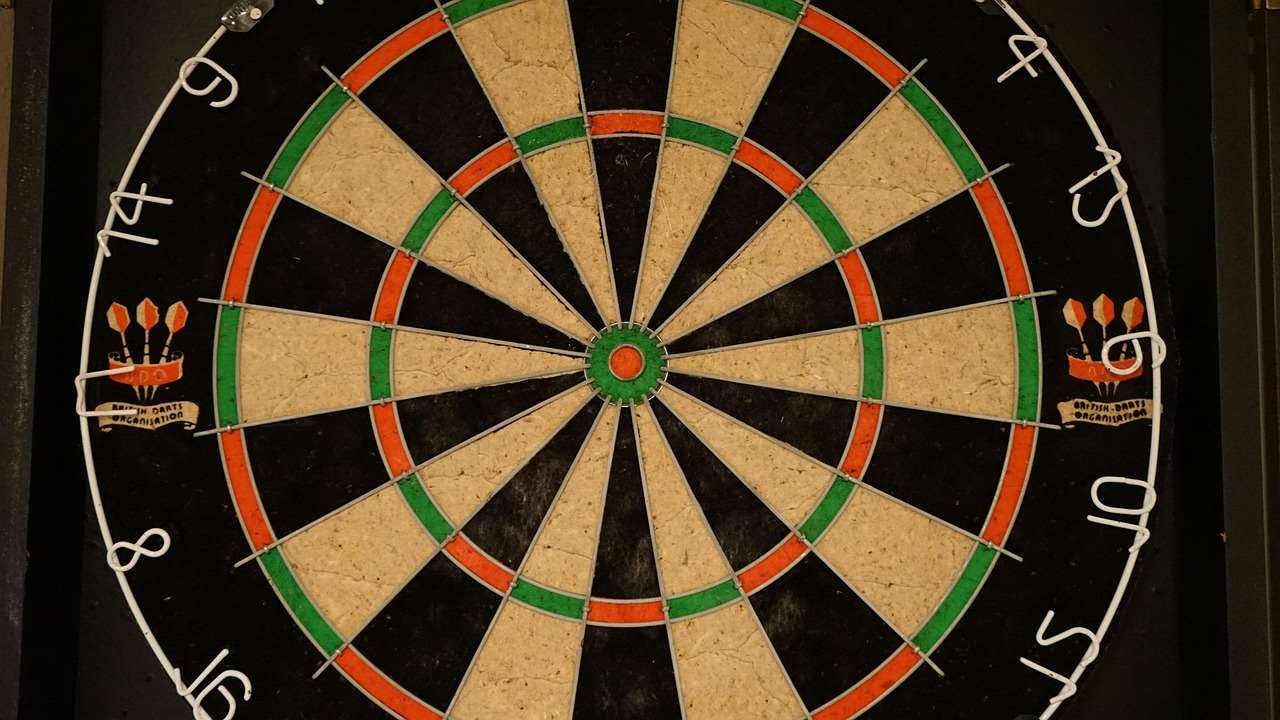Securing a live darts event demands meticulous planning and execution; this Live Darts Event Security Guide delivers a comprehensive strategy to ensure the safety and enjoyment of all attendees. From risk assessment and crowd management to emergency protocols and staff training, we’ll cover everything you need to know to create a secure and well-managed environment. You will also learn about how to handle potential disruptions and the importance of communication during a darts event.
⚠️ Still Using Pen & Paper (or a Chalkboard)?! ⚠️
Step into the future! The Dart Counter App handles all the scoring, suggests checkouts, and tracks your stats automatically. It's easier than you think!
Try the Smart Dart Counter App FREE!Ready for an upgrade? Click above!
Understanding the Need for a Robust Live Darts Event Security Guide
Darts events, while generally jovial, can attract large crowds and require comprehensive security measures. A detailed security plan is vital not only for protecting attendees and staff but also for ensuring the smooth running of the event and upholding the venue’s reputation. Addressing potential security risks proactively is crucial for a successful and safe event. Creating a detailed live darts event security guide is the first step.
The level of security required will depend on several factors, including:
- Venue size and layout: Larger venues present different challenges than smaller, more intimate settings.
- Expected attendance: Higher attendance numbers necessitate more extensive security personnel and resources.
- The nature of the event: High-profile events or events with known security risks require heightened security measures.

Conducting a Thorough Risk Assessment
Before implementing any security measures, it’s essential to conduct a thorough risk assessment. This process involves identifying potential security threats and vulnerabilities, assessing the likelihood and impact of each threat, and developing strategies to mitigate these risks.
Identifying Potential Threats
Common threats at live darts events can include:
- Disruptive behavior: This can range from excessive noise and drunken behavior to more serious incidents such as fights or vandalism.
- Unauthorised access: Preventing individuals without tickets or proper credentials from entering the venue.
- Theft and property damage: Protecting attendees’ belongings and venue property from theft and damage.
- Terrorism and violence: Although less common, these threats must be considered and addressed in the security plan.
- Medical emergencies: Having adequate medical personnel and resources available to respond to injuries and illnesses.
Consider what to expect at live darts in terms of the audience and anticipate potential challenges.
Assessing Vulnerabilities
Vulnerabilities are weaknesses in the venue’s security that could be exploited by potential threats. These can include:
- Insufficient security personnel: Not having enough security guards or ushers to adequately monitor the crowd.
- Inadequate security equipment: Lacking essential equipment such as metal detectors, CCTV cameras, and communication devices.
- Poorly lit areas: Dark areas around the venue can provide opportunities for criminal activity.
- Lack of emergency exits: Insufficient or poorly marked emergency exits can hinder evacuation efforts in the event of an emergency.
- Weak access control: Ineffective methods for verifying tickets and preventing unauthorised access.

Implementing Effective Crowd Management Strategies
Crowd management is a critical component of live darts event security. Effective crowd management strategies can help prevent overcrowding, minimize the risk of incidents, and ensure the safety and enjoyment of all attendees.
Controlling Entry and Exit Points
Controlling entry and exit points is essential for preventing unauthorised access and managing crowd flow. Strategies include:
- Designated entry and exit points: Clearly mark entry and exit points with signage and barriers.
- Ticket verification: Implement a robust ticket verification system to prevent fraudulent tickets and unauthorised entry.
- Bag checks: Conduct bag checks to prevent prohibited items from entering the venue.
- Security personnel at entry points: Deploy security personnel at entry points to monitor crowd flow and address any security concerns.
Managing Crowd Density
Overcrowding can lead to a variety of safety hazards. Strategies for managing crowd density include:
- Limiting ticket sales: Set a maximum capacity for the venue and limit ticket sales accordingly.
- Staggering entry times: Allow attendees to enter the venue in staggered intervals to prevent overcrowding at entry points.
- Monitoring crowd density: Use CCTV cameras and security personnel to monitor crowd density in different areas of the venue.
- Implementing one-way systems: Implement one-way systems in congested areas to improve crowd flow.
Understanding the atmosphere at live darts matches helps in predicting crowd behavior and adjusting management strategies accordingly.
Deploying Security Personnel and Equipment
The deployment of adequate security personnel and equipment is crucial for maintaining a safe and secure environment at live darts events. This includes determining the appropriate number of security guards, ushers, and medical personnel, as well as selecting the right security equipment.

Determining Security Personnel Needs
The number of security personnel required will depend on factors such as the venue size, expected attendance, and the nature of the event. Consider the following guidelines:
- Security guards: Deploy security guards at entry points, throughout the venue, and at strategic locations to monitor crowd behavior and respond to incidents.
- Ushers: Use ushers to guide attendees to their seats, provide information, and assist with crowd management.
- Medical personnel: Have trained medical personnel on-site to provide first aid and respond to medical emergencies.
Selecting Security Equipment
Essential security equipment for live darts events includes:
- Metal detectors: Use metal detectors at entry points to prevent weapons from entering the venue.
- CCTV cameras: Install CCTV cameras throughout the venue to monitor crowd behavior and deter criminal activity.
- Communication devices: Provide security personnel with two-way radios or other communication devices to facilitate communication and coordination.
- Lighting: Ensure adequate lighting throughout the venue, especially in parking areas and walkways.
Developing Emergency Response Protocols
Having well-defined emergency response protocols is crucial for responding effectively to incidents such as medical emergencies, fires, or security threats. These protocols should outline the steps to be taken in each type of emergency, as well as the roles and responsibilities of different personnel.
Evacuation Procedures
Evacuation procedures should include:
- Clearly marked emergency exits: Ensure that emergency exits are clearly marked and easily accessible.
- Evacuation routes: Designate evacuation routes and post them throughout the venue.
- Emergency alarms: Install emergency alarms to alert attendees to evacuate the venue.
- Trained personnel: Train security personnel and ushers on evacuation procedures.
Communication Protocols
Effective communication is essential during an emergency. Communication protocols should include:
- Designated communication channels: Establish clear communication channels between security personnel, medical personnel, and event management.
- Emergency communication system: Implement an emergency communication system to disseminate information to attendees.
- Public address system: Use the public address system to provide instructions and updates to attendees during an emergency.

Training and Briefing Security Staff
Proper training is paramount in ensuring the security staff are well-prepared for any situation. A comprehensive training program is critical for equipping staff with the skills and knowledge to manage crowd control, handle emergencies, and ensure the overall safety of the event.
Pre-Event Briefing
Before each event, conduct a thorough pre-event briefing to:
- Review the security plan and emergency response protocols.
- Assign roles and responsibilities to each team member.
- Discuss potential security threats and vulnerabilities.
- Provide updates on any relevant information.
Ongoing Training
Continuous training can help keep security skills sharp.
- De-escalation techniques: Train security personnel on de-escalation techniques to resolve conflicts peacefully.
- First aid and CPR: Provide training in first aid and CPR to enable security personnel to respond to medical emergencies.
- Emergency response procedures: Conduct regular drills and exercises to ensure that security personnel are familiar with emergency response procedures.
Consider the Darts Culture And Community Guide to ensure you are ready to handle any challenges arising from the crowds.
Handling Potential Disruptions
Even with the best planning, disruptions can occur. Having strategies in place to handle these situations calmly and effectively is vital.
Identifying Disruptive Behavior
Recognize the signs of potential disruptions, such as:
- Excessive alcohol consumption
- Aggressive or abusive language
- Physical altercations
- Vandalism
Responding to Disruptions
Establish procedures for responding to disruptions:
- Approach the individual calmly and respectfully.
- Assess the situation and determine the appropriate course of action.
- Attempt to de-escalate the situation verbally.
- If necessary, involve security personnel or law enforcement.
- Document the incident thoroughly.

Communication and Coordination
Effective communication and coordination are essential for a successful live darts event security plan. This involves establishing clear communication channels between all relevant parties, including security personnel, event management, and local authorities.
Establishing Communication Channels
Communication channels can include:
- Two-way radios
- Mobile phones
- A dedicated communication system
Coordinating with Local Authorities
Collaborate with local authorities such as the police and fire department to:
- Share information about the event and security plan.
- Request assistance with security and traffic management.
- Coordinate emergency response efforts.
Planning your travel tips for darts tournaments is an ideal time to review your security measures.
Conclusion
This Live Darts Event Security Guide outlines the essential steps for creating a safe and secure environment for all attendees. By conducting a thorough risk assessment, implementing effective crowd management strategies, deploying adequate security personnel and equipment, developing emergency response protocols, training security staff, and fostering clear communication and coordination, you can minimize the risk of incidents and ensure a successful and enjoyable event. Remember, a proactive and well-prepared approach is key to ensuring a positive experience for everyone involved. Now, take the next step and implement these strategies to create a secure darts event. Contact us today for a consultation on tailoring this guide to your specific event needs.
Hi, I’m Dieter, and I created Dartcounter (Dartcounterapp.com). My motivation wasn’t being a darts expert – quite the opposite! When I first started playing, I loved the game but found keeping accurate scores and tracking stats difficult and distracting.
I figured I couldn’t be the only one struggling with this. So, I decided to build a solution: an easy-to-use application that everyone, no matter their experience level, could use to manage scoring effortlessly.
My goal for Dartcounter was simple: let the app handle the numbers – the scoring, the averages, the stats, even checkout suggestions – so players could focus purely on their throw and enjoying the game. It began as a way to solve my own beginner’s problem, and I’m thrilled it has grown into a helpful tool for the wider darts community.